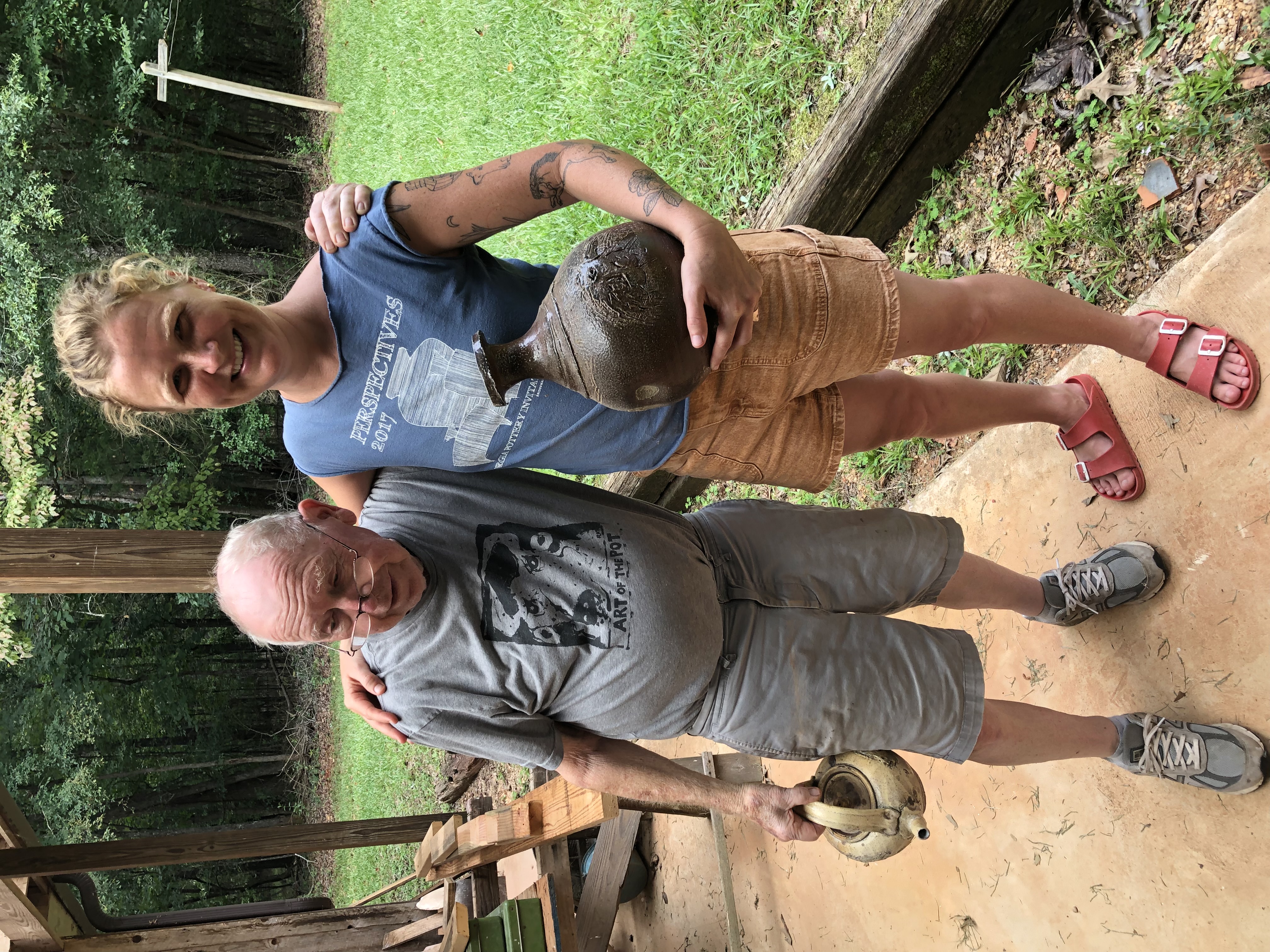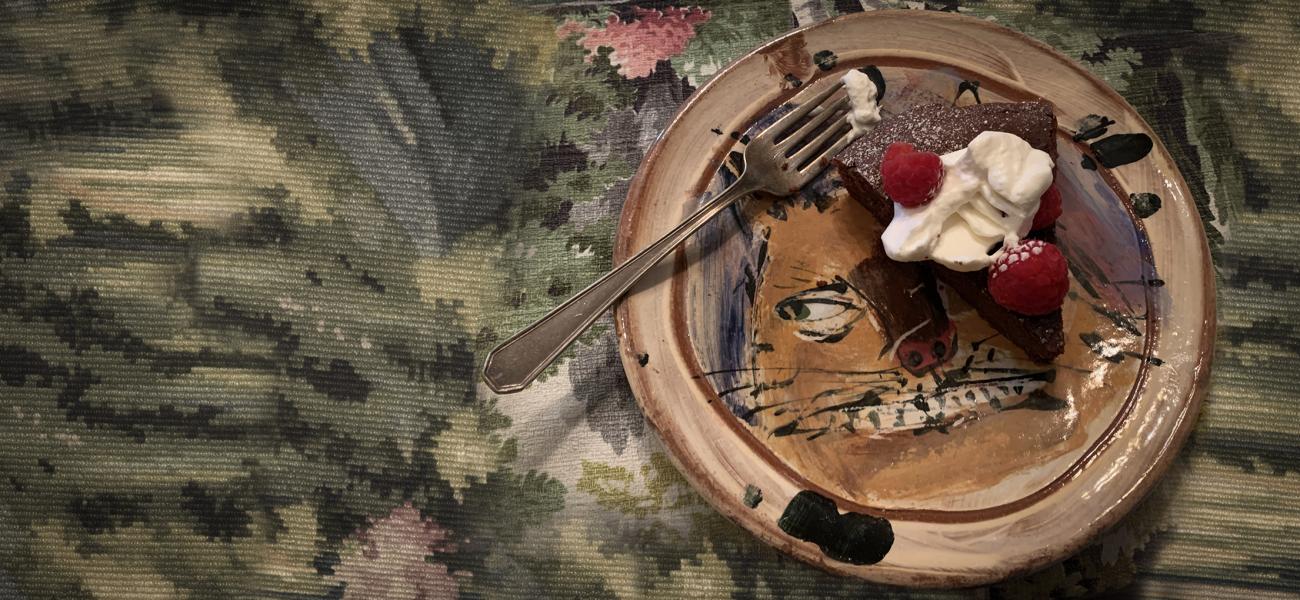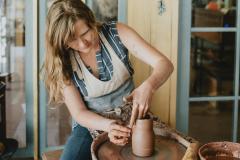Ron Meyers – My Interactions with a National Living Treasure
 Quite simply, Ron Meyers is the best pottery mentor a gal could ever hope for. I once wrote those very words on a birthday card when he invited my family to celebrate his eightieth birthday. But long before that, handwritten notes played an important role in our relationship, teaching me the value of seeking out mentors and recognizing their impact.
Quite simply, Ron Meyers is the best pottery mentor a gal could ever hope for. I once wrote those very words on a birthday card when he invited my family to celebrate his eightieth birthday. But long before that, handwritten notes played an important role in our relationship, teaching me the value of seeking out mentors and recognizing their impact.
Ron, for his part, is endlessly generous. He welcomes so many of us into his world – his home, his studio, his life. He leads by example, working with humility, humor, and relentless dedication. I count myself incredibly lucky to have his mentorship and support. From my first wood firing to my first gallery show after grad school, from assisting him in teaching to sipping bourbon together after long days in the studio, Ron brought me along, offering both opportunity and friendship.
As an undergraduate, I first met Ron when a group of students visited his studio. He invited a few of us to fire his wood kiln, and when I returned to unload, I happened to be alone with him and Michael Simon. As they pulled pieces from the kiln, they talked openly, critiquing what worked and what didn’t. They welcomed me into this ritual, treating me like a fellow potter rather than just a student. I knew even then what an immense honor that was, so I wrote Ron a thank-you note. And from then on, our relationship grew.
I kept firing with him, and he kept inviting me back. When he decided to fire a low-fire wood kiln, he suggested I add some pieces, knowing I was working at cone 1 at the time. While I was making a few cups for the firing, he called and said, “There’s a lot of space; make some big pots.” And when Ron Meyers tells you to make big pots, you make big pots! I threw and coiled three large jars for that firing, and I never really stopped. Bigger pieces became a central part of my practice, and I’m grateful he pushed me beyond my comfort zone when I was focused on making small, inexpensive cups just to get by.
In Athens, Georgia, Ron’s pottery is everywhere. The stories of him and Michael Simon selling out their Christmas sales in seconds became legend; proof that making a living as a potter wasn’t just a dream. Their work is woven into the fabric of the town. Finding their plates, cups, and large jars in homes all around Athens creates a culture where pottery feels sacred. Like a treasure hunt, you never know when you’ll be served a slice of lemon meringue pie on a mean bunny plate.
Ron fostered a storytelling tradition in Athens pottery, where loose, expressive imagery becomes part of the language of clay. That influence helped me find my voice within a lineage of fresh, gestural work. These are friendly, approachable pieces that add so much light to the world. I love having a tradition to work within, but even more, I love carrying it forward – teaching it outside the confines of home, in places where looseness isn’t always the norm. Helping others continue that tradition is a joy.
Ron even helped me advance my career without meaning to. I loved using his work, so I posted a picture of his mug with a coffee pour-over on top that I had made. Somewhat jokingly, I called it a collaboration piece. That Instagram post caught the attention of Ceramics Monthly, and they asked me to write an article about the pour-over. I was nervous but worked hard on it, and when it was published – cover page and all – I couldn’t believe it. Ron did it again.
For me, finding Ron was more than just finding a mentor. As one of the few potters in a ceramics department that prioritizes sculpture, I often felt like pottery took a backseat. But Ron’s success and work prove otherwise. His looseness is intentional, practiced, and creates pieces that feel alive. His strange animals – each one a little offbeat, a little feral – became even better when I learned they were actually portraits of faculty members sketched during meetings. Apparently, everyone was a little angry and bored.
When Ron invited me to do a show with him soon after I finished my MFA, I could hardly believe my luck. It was the confidence boost I desperately needed. It also gave me the courage to seek guidance from others who had paved the way before me.
Later, when I was teaching a beginning throwing class at the University of Georgia, Ron offered to do a demo. If you’ve ever taught beginners, you know how precious and precarious their early pieces feel to them. They’re terrified of touching the clay too hard, of ruining what they’ve made. During the demo, Ron threw a cylinder, then grabbed it off the wheel with such force that his fingers left deep indentations in the form. The entire class gasped. And in that single motion, he probably taught them more than I ever could in words: to work with clay, you can’t be afraid of it.


